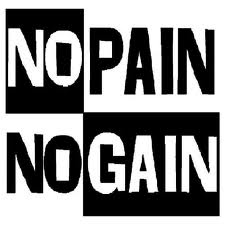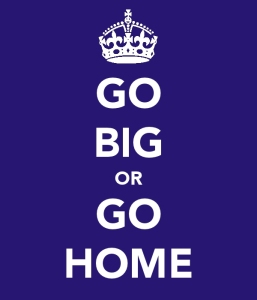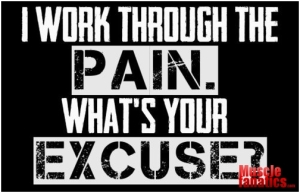In part 1, we talked about how our culture celebrates work and activity and can be almost hostile, it seems, to rest and renewal. ESPECIALLY in the fitness industry! Which is really quite counterproductive as evidenced by my own story. 🙂 So how do we stay fit while moving away from the ‘go hard or go home’ mindset? How do we find balance?
To maintain a powerful pulse in our lives, we must learn how to rhythmically spend and renew energy. *
The reason I loved The Power of Full Engagement so much is because the point of the book is that rest allows us to stop going through the motions and more fully engage in life, whether that be in business, fitness, or relationships. The author’s point is stated simply in this question: “If you could wake up tomorrow with significantly more positive focused energy to invest at work and with your family, how significantly would that change your life for the better?”.
Prioritizing rest is prioritizing your work, your loved ones, your health, your quality of life. That is why rest is so important. That is why I believe rest should be just as much of a priority as work.

So with that being said, here are few things I have learned to implement that have really helped me Do Less and therefore, find more balance:
1) Managing energy, not time
Allow me to start with a story. My first real job was cleaning hotel rooms. Since I’m not a morning person, I figured I would just workout after work. Only problem with this was that I was on my feet, vacuuming, scrubbing, picking up after random people, and making beds the entire day. So when I did actually get a workout in, it wasn’t a very productive one. So I tried working out before work. As much as I hated getting up earlier than I absolutely had to, this ensured that I had plenty of energy and got a good workout in. Plus it turns out I actually had more energy throughout the work day as well!
Many of us have a story like this, right? We put together our schedule, looking for where we can fit this or that in, without any concern as to the energy it will take to accomplish it. This is why so many people struggle to get to the gym regularly. Sure, most of us have plenty of time to workout after work, but without the energy to do it it doesn’t really matter how much time you have!
Energy, not time, is our most precious resource. *
Take some time to learn yourself. Figure out when you are the most energetic and productive. Schedule the most important things you want to get done during those times. Then let the rest be what it is. Learning to manage your energy can be tricky. You have to let go of the “superman/superwoman” mentality, BUT I think you will also be surprised how much you get done.
2) Actively disengaging
Going right along with scheduling your priorities around your most productive time, we also have to allow for down time.
It’s been shown that people produce a higher quantity and quality of work in shorter bursts (90-120 minutes) followed by a time of deliberate rest or actively disengaging (even if it is just 5-10 minutes). Actively disengaging means deliberately shifting your attention from achievement to restoration. Your body needs this whether it be for a project, a workout, or a conversation. You can’t give your full attention to everything without any breaks and then expect to keep up the same amount of focus all day long.
Running yourself ragged day after day, beating yourself up about the things you didn’t get done, that’s no way to live. Plus, it’s completely unsustainable, meaning eventually something will give out.
Schedule specific times for rest and rejuvenation.
Set up clear boundaries between work and home. Learning to actively disengage enables you to be productive at work, then go home and be all there for your loved ones.
3) Learning when to rest and when to go hard
Yes, in order to reach most goals, especially in the gym, you will have to push past perceived limitations and learn how to deal with discomfort. But there also needs to be a balance between too little and too much! (For more specifics on what that looks like in the gym, go here.)
Back in the day, when I was still running myself ragged in the gym, I would often make some of my best gains after coming back from vacation. It’s embarrassing that I never put it together back then. No one can go at 100% intensity all of the time. We have to back off and give our bodies rest so that we can come back stronger and with more intensity.
Nearly every elite athlete we have worked with over the years has to come to us with performance problems that could be traced to an imbalance between the expenditure and the recovery of energy.*
Sometimes you just need to take it easy, back off on the weight a bit, and focus on the basics. Sometimes you need to take the day off and just go for a long walk instead. As you learn to listen to your body, you will also learn when it’s feeling good and can be pushed harder.
When in balance, people tend to experience:
- Fewer injuries
- Better hormone balance
- Lower stress levels
- Less anxiety
- Higher productivity
- Deeper relationships
- More happiness and contentment
Dan John, a world renowned fitness expert and strength coach, was talking about training when he said, “you have to have the courage to do less.”
It is a little scary, isn’t it? But the benefits above are the things that lead to higher consistency, which in turn leads to fat loss and a healthier mindset & lifestyle!
The challenge is finding that balance for yourself. It might not be easy, but it is definitely worth it.
What do you think? Do you have a hard time believing more rest could actually help instead of hinder your progress? What tools do you use in order to unsure you’re getting enough rest? Leave a comment over on the Beth Burns Fitness facebook page and let me know! 🙂
*All quotes from: The Power of Full Engagement by Loehr and Schwartz. I highly recommend.
[Tweet “Prioritizing rest is prioritizing your work, your loved ones, your quality of life. “]
[Tweet “Energy, not time, is our most precious resource. -The Power of Full Engagement”]
[Tweet “You have to have the courage to do less. -Dan John”]







